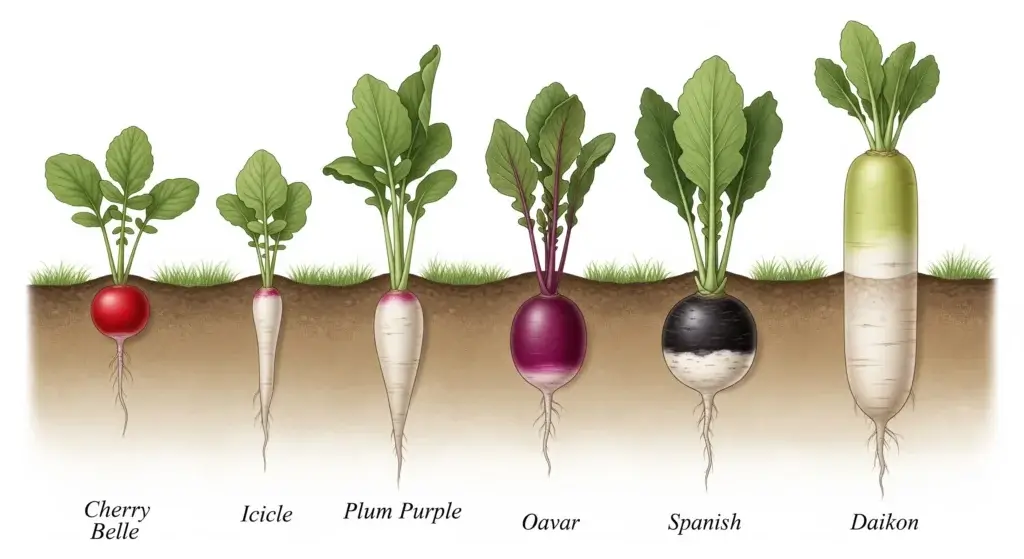
Growing celery? Yeah, it’s not a “plant it and forget it” kind of deal.
This veggie is a total diva—needs the perfect temp, lots of love, and zero chaos.
But get the timing right, and bam: crunchy, juicy stalks that are salad royalty.
The secret? Planting at the right time for your zone.
Celery (Apium graveolens, if you’re feeling bougie) hates drama—no heat waves, no cold snaps.
This quick guide shows you when to plant by USDA Hardiness Zone so your celery doesn’t flop harder than a rebooted sitcom.
Why Timing Matters for Celery
Celery is basically the Goldilocks of the garden—it wants everything just right.
Temps between 60–70°F (15–21°C) are its sweet spot.
Too hot? It bolts and throws a floral tantrum.
Too cold? It sulks and stops growing.
Add in the fact that it takes forever (aka 120–140 days) to mature, and yeah—timing is everything if you want juicy, not stringy, stalks.
Understanding USDA Hardiness Zones
The USDA Hardiness Zone Map is like a matchmaking app for plants.
It splits North America into zones based on how cold it gets in winter.
Knowing your zone helps you figure out when to plant stuff without playing weather roulette.
Not sure what your zone is? Just Google “USDA Hardiness Map,” plug in your zip code, and boom—you’re in the know.
- Read also: Homemade Celery Fertilizer: Boost Growth with These Solutions
- Read also: Regrowing Celery from Kitchen Scraps: A Step-by-Step Guide
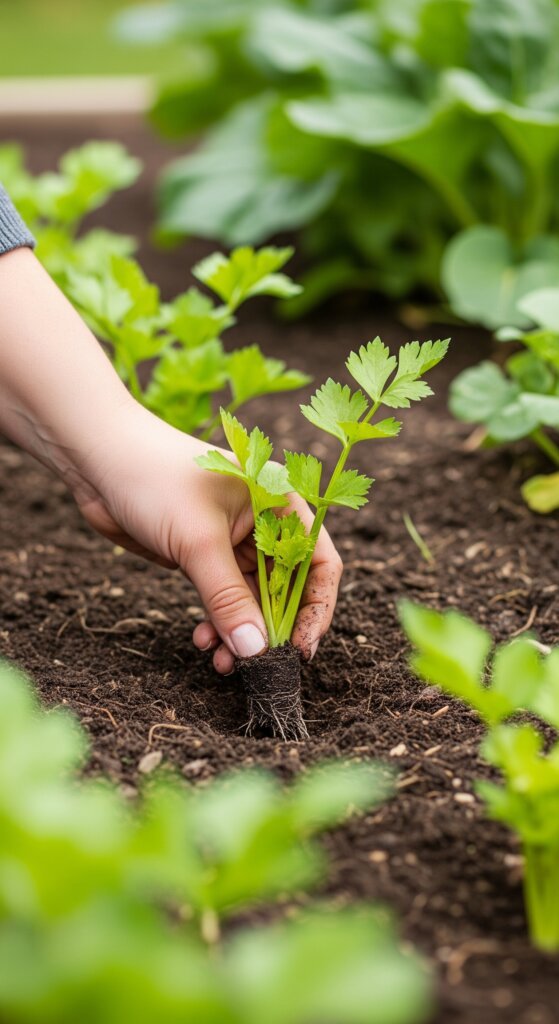
When to Plant Celery by USDA Zone
Let’s be real—celery doesn’t do surprises. It likes a long, mild season with zero weather drama.
So here’s your zone-by-zone cheat sheet to keep your celery chill and your stalks thick.
Zone 3–4 (coldest zones)
- Start seeds indoors: Early March (yes, while there’s still snow outside)
- Move outdoors: Late May to early June, after the frost ghosts are gone
- Pro tip: Raised beds + row covers = warm hugs for your baby celery
- Harvest: Mid to late summer—your patience pays off
Zone 5–6
- Start seeds indoors: Late Feb to early March
- Transplant time: Late April to early May
- Pro tip: Give your seedlings a glow-up (aka harden them off) before moving day
- Harvest: Late summer to early fall—soup season ready
Zone 7–8
- Start seeds indoors: Mid to late January
- Transplant time: Mid to late March
- Hot tip: In Zone 8, you can direct sow in late winter like a garden rebel
- Harvest: Early summer or fall—choose your own celery adventure
Zone 9–10 (warmer zones)
- Start seeds indoors: November to January
- Transplant time: Jan–Feb (Zone 9) or Dec–Jan (Zone 10)
- Alt route: Plant in fall for a winter/spring harvest (celery loves the cool-down)
- Harvest: Spring or late winter, just in time for green juice season
Zone 11+
- Planting season: Late fall to early winter
- Transplant time: November to December
- Pro tip: Skip summer—celery bolts faster than a reality star after bad press
- Harvest: Late winter to early spring—crunch game strong
Celery Planting Timeline Overview (Quick Chart)
| USDA Zone | Start Seeds Indoors |
Transplant Outdoors
|
| Zone 3–4 | Early March |
Late May–Early June
|
| Zone 5–6 | Late Feb–Early March |
Late April–Early May
|
| Zone 7–8 | Mid–Late January | Mid–Late March |
| Zone 9–10 | Nov–Jan | Jan–Feb |
| Zone 11+ | Late Fall–Winter | Nov–Dec |
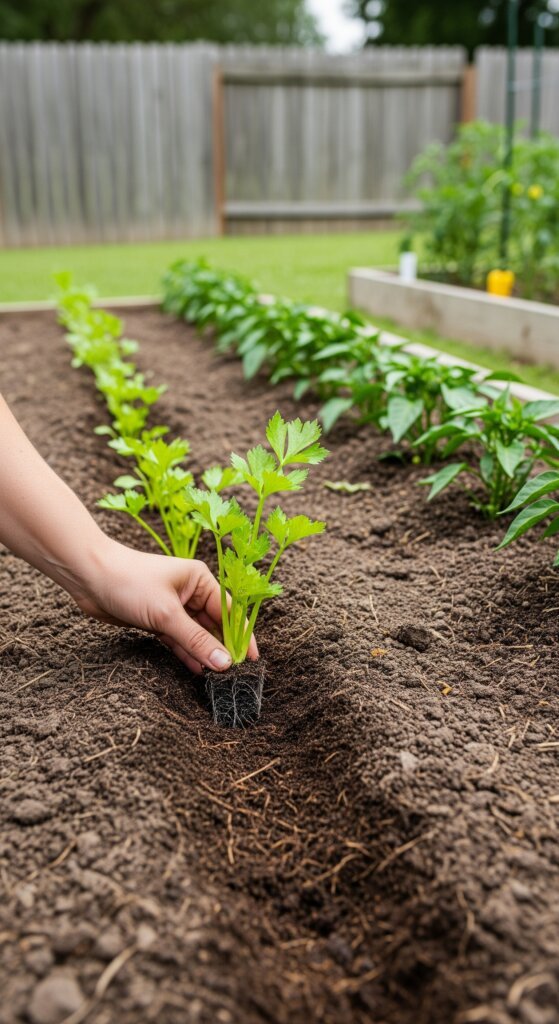
How to Start Celery from Seed
Okay, real talk—starting celery from seed is not for the instant gratification crowd.
These seeds take forever to sprout (like, up to 21 days).
So grab a snack, channel your inner plant parent, and get comfy.
Step-by-step for growing celery like a pro:
- Start early—like, really early: Count backward from your last frost date and start seeds 10–12 weeks before that. Celery doesn’t do fashionably late.
- Soak the little divas overnight: Tuck the seeds into a glass of water for a sleepover—it helps them wake up faster.
- Use seed trays + seed-starting mix: Fill trays with damp (not soaked) mix. Fancy soil = happy sprouts.
- Give ‘em some heat: Stick the trays on a heat mat (target temp: 70–75°F / 21–24°C). Celery likes warm feet.
- DO NOT bury them: These seeds need light to sprout. Sprinkle them on top of the soil and press them in gently. No soil blanket—this isn’t naptime.
- Keep the vibe moist: Mist daily to keep the surface damp, not soggy. Think “spa mist,” not “monsoon.”
- Thin the crowd: Once seedlings hit about 2 inches tall, pick the strongest ones and give them their own space—1 per cell, no drama.
- Harden them off: Before moving them outside, let them chill in the fresh air for a week. Think of it as outdoor orientation.
Hot tip: Celery takes patience, but once it sprouts? You’re in for garden gold. Just stay consistent and don’t panic if nothing happens for a few weeks—celery’s just fashionably slow.
Outdoor Growing Tips for Healthy Celery
So your celery babies are ready for the great outdoors? Nice.
Now it’s time to treat them like the royalty they think they are.
Here’s how to give them the VIP garden treatment—without losing your mind.
Soil requirements:
If your dirt’s dry, compacted, or sad? Celery will ghost you. It wants:
- Fancy, rich, loamy soil (think chocolate cake texture)
- pH between 6.0 and 7.0 — not too sour, not too basic
- Upgrades: Mix in compost, aged manure, or organic fertilizer. Celery is needy for nitrogen, so feed it like it’s bulking for a CrossFit comp.
Planting
Give your celery room to breathe—it’s not a fan of crowds.
- Spacing: 8–10 inches between plants, 18–24 inches between rows
- Depth check: Bury them just up to the base of the first leaves. No deeper, no shallower. You’re Goldilocks now.
- Water: Give them 1.5–2 inches a week. Keep soil moist, not swampy. If it dries out? Expect bitter, skinny drama-stalks.
Mulching
Add a layer of mulch like straw or grass clippings to:
- Hold moisture (celery’s thirsty)
- Keep roots cool (no one likes hot feet)
- Block weeds (because who has time for that?)
Fertilizing
Celery wants dinner every 2–3 weeks. No excuses.
- Use a nitrogen-rich snack: Fish emulsion, compost tea, or any good organic fertilizer
- Bonus: Your celery will grow thick, juicy stalks instead of sad garden noodles.
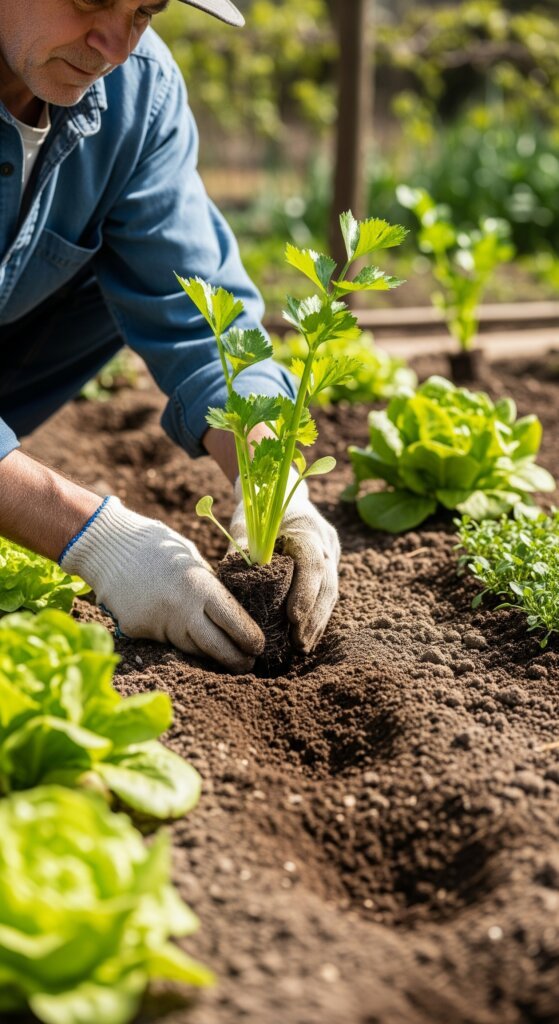
Common Celery Growing Mistakes to Avoid
So, you’ve nailed when to plant celery by zone—awesome.
But timing alone won’t get you those fat, crunchy stalks.
To really win the celery game, you’ve gotta avoid some classic rookie mistakes.
Let’s run through ‘em so you don’t accidentally raise bitter, stringy garden drama queens.
Planting way too early (or fashionably late)
Celery doesn’t do surprise weather.
- Too early? Frost damage.
- Too late? Heat stress and bolting (a.k.a. the celery version of quitting mid-season).
Goldilocks zone = cool, steady temps. Start indoors early, then transplant after frost ghosts you.
Underwatering
Celery is basically 95% water, so dry soil is a no-go.
- Result? Bitter, stringy, sad stalks no one wants to dip in hummus.
Keep that soil moist—not swampy, just consistently damp like a well-written romcom.
Skipping the hardening-off phase
Would you want to go from a cozy seedling spa to wild outdoor winds without warning?
Celery hates that too.
Harden off your plants over 7–10 days before moving them outside full time. Let them vibe with the weather gradually.
Lazy soil = weak stalks
If your dirt’s dead, your celery will be too.
- Poor soil = skinny, flavorless stalks that scream, “I’ve seen things.”
- Load up your bed with compost, manure, or organic fertilizer. Celery is a heavy feeder—treat it like it’s training for the Olympics.
Overcrowding = stalk fight club
Too many plants = no airflow = fungal nightmares and sad celery.
Space them out like they’re introverts at a party: 8–10 inches between each, minimum.
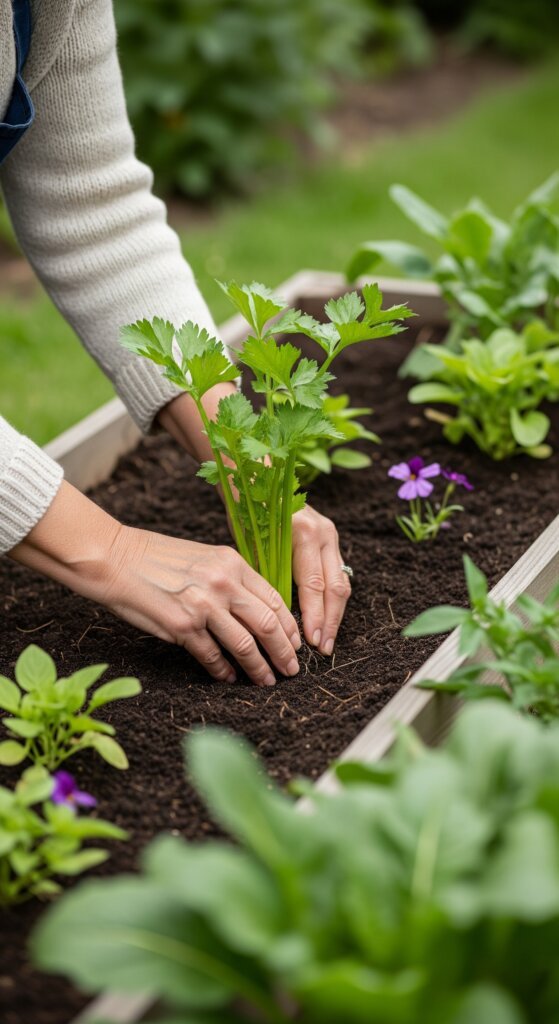
- Read also: Winter Celery Care Tips: Keep Your Celery Thriving in Cold Weather
- Read also: Summer Celery Watering Schedule: Keep Your Celery Thriving
Conclusion: Right Time, Right Zone, Great Celery
Wondering when to plant celery? It all comes down to your USDA zone. Celery’s picky—it needs perfect timing, good soil, and some love.
Whether you’re chilling in Zone 4 or basking in Zone 10, planting at the right time turns skinny stalks into crunchy heroes for your next snack attack.
Start early, pick the right variety, and follow your zone’s lead.
Soon, you’ll be munching celery fresh enough to steal the show in any dish.
Your garden—and your taste buds—will high-five you.



